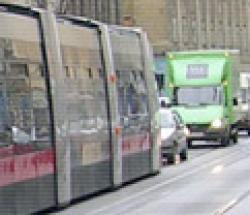| Brief description |
A cross-border traffic model to assist with the establishment of improved transport planning strategies for the Vienna – Bratislava region
|
|---|---|
| Region | Internal EU borders |
| Countries | Austria (AT) – Slovakia (SK) |
| Location | AT: Vienna-Lower Austria- Burgenland
SK: Bratislava-Trnava |
| Type of project partners | Municipalities Regional government units |
| Size (total budget including EU grants) | Over € 500,000 |
| Main themes | Research, technological development, innovation and ICT Transport and public infrastructures |
| Keywords (Types of Activities) | Research and studies |
| Keywords (Aspects of Good Practice) | Genuine cross-border dimension Genuine cross-border impact Innovative Good sustainability |


